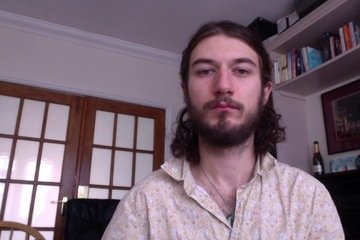Update: On the Ground at Occupy City Hall Philadelphia, One Week In
Protesters have been occupying the eastern side of Philadelphia’s city hall for well over a week now, and the occupation has solidified into a small, self-sustaining community of individuals who have created their own culture and rules.
Citizen Truth’s correspondent, Will Bacha has been following the occupation and reported on the environment at the camp below.
Occupy City Hall Philadelphia Lilac Agreement

The welcome center of the encampment
The “rules” of Occupy City Hall are painted on a large piece of plywood that is prominently displayed at the front of the campsite for all to see. Originally called the “Lilac” agreement due to the fact that the plywood is painted this shade of purple and as a homage to the Local Initiative/Local action committee, the rules are simple and direct: no photos or video of anyone without asking permission first, no drugs or alcohol, no flag burning, and no abusers nor fascists. The rules are practical and meant to ensure that the occupation will continue while also minimizing the risk of police action and negative consequences for the occupiers as a result.
Another feature of the occupation since it began outside of ICE’s Philadelphia offices on the corner of 8th and Cherry streets is an emphasis on using gender-neutral pronouns and allowing everyone to self-determine how they would like to be addressed. That focus has resulted in an atmosphere of inclusivity which has helped sustain the occupation and strengthened bonds between people in the movement.
Banning intoxicating substances and flag burning from the occupied site ensures that the police aren’t able to invade and stop the occupation. The rule about photos and video protects the identities of the occupiers, and keeping “abusers” and “fascists” away from the site is meant to ensure the safety of the space and prevent physical confrontations.
Goals of Occupy City Hall Philadelphia
The purpose of the Occupation is to abolish ICE and force Mayor Jim Kenney to end the agreement allowing ICE access to the Preliminary Arraignment Reporting System, and it’s possible that the occupiers are getting close to achieving this second goal. Leaders of the movement have met with Kenney, and the Philadelphia District Attorney has made it abundantly clear that he is very against this agreement.
District Attorney Larry Krasner elaborated on his feelings and explained how this agreement is bad for everyone in the city of Philadelphia, saying that “many immigrants are scared to participate in our criminal justice system because they are fearful that they or their loved ones will be deported. Quite frankly, cooperating with ICE at this time makes our city less safe because it makes undocumented individuals fearful of coming forward to report crimes or testify in criminal cases.”
Multifaceted Movement
One notable feature of the occupation is how many different organizations and people of different backgrounds are jointly forming the autonomous city directly outside of Philadelphia’s city hall.
There are socialists, anarchists, and people of no real political orientation working with members of the Latino community and other organizers. Many EMTs and doctors have volunteered their medical services, and there is an abundance of free vegan food thanks to the efforts of groups like Food Not Bombs.
An occupier who requested not to be identified explained, “I’m a socialist, and being here in solidarity with oppressed groups is a big part of everything we stand for.”
The solidarity and multiple layers of support for the movement are possibly one of its most significant strengths. As divisiveness in the United States gets even worse, and groups feel even more oppressed, the need for unity and teamwork becomes more crucial and pivotal than ever. It is much harder to control or shut down a movement supported by a wide diversity of people and organizations.
An Agreement with Philadelphia Mayor, but Tensions Persist
Though activists have reached an agreement with Mayor Kenney regarding the occupation outside City Hall, things are still very tense between the authorities and the occupiers. The protesters had been using electrical outlets located outside of City Hall to provide electricity to the encampment when the Mayor shut off the electricity and banned generators from the site. That move ultimately seemed to have little effect on the occupation as electricity is not required for most of the needs of the encampment.
Sherriff’s deputies patrol around the site night and day, which creates an oppressive and tense atmosphere. Protesters have been told not to deface any property, and police have used this as an excuse to rip down signs and banners that protesters hang up. But the police’s authority and power are called into question because protestors just hang up signs again right away and the police can do little to prevent the signs from going back up.
What the occupation of city hall does prove is that the American spirit of protest is alive and well and the Occupy Movement of the early 2000’s may be making a comeback.







